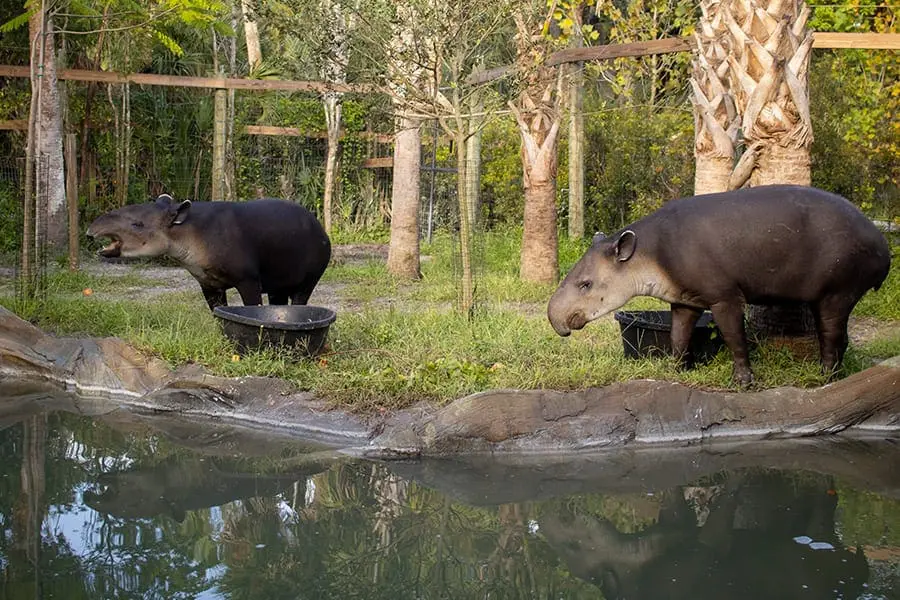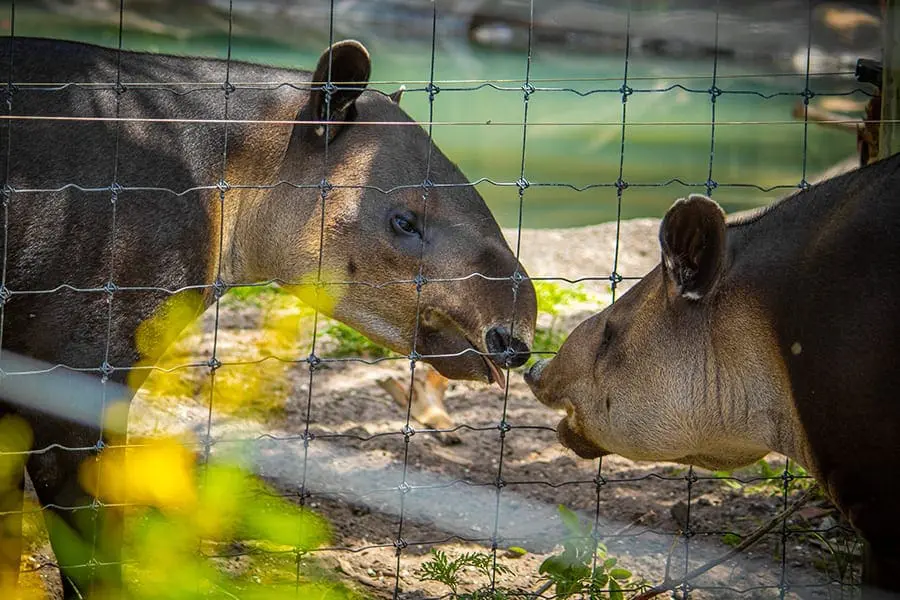

Mia (right) and Antonio share a meal.
Over the summer, we took the exciting step of physically introducing Baird’s tapirs Mia and Antonio to one another. This was a major achievement because tapirs are typically solitary by nature, only coming together to breed. However, they can share space in human care if their habitat is set up properly and the “chemistry” between individuals is right.
It took a long time to get to this point. When Rainforest Revealed opened last November, Antonio and Mia were placed in adjacent yards separated by mesh fencing. This process is called “howdying” and allows future cohabitants to see and smell each other.

Mia (right) and Antonio interact during the howdy process earlier this year.
Once we observed positive behaviors from both tapirs (such as sitting next to one another along the shared fence), we began opening a gate to connect the two yards for short “playdates.” A few weeks later, animal management staff comfortable enough to keep this gate open during Zoo hours. Keepers check in on the pair periodically throughout the day and can separate them if necessary.
In addition to having more space, Mia and Antonio now have the opportunity to mate. They were matched by the Baird’s Tapir Species Survival Plan, which uses genetic analysis to identify pairs that will best contribute to the long-term survivability of their species in human care; this is critical as Baird’s tapirs are considered endangered due to habitat loss and collision with vehicles.
Although Mia and Antonio have been observed mating, don’t expect to see a tapir calf running around anytime soon. Mia may not be sexually mature for another year or two, and once she becomes pregnant, it’ll take 13 months of gestation before a little one arrives.
